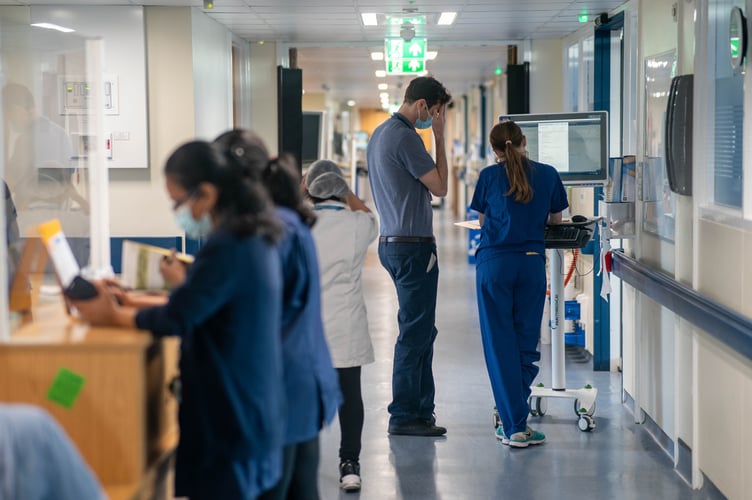More than 15,000 patients were waiting for routine treatment at Robert Jones and Agnes Hunt Orthopaedic Hospital in December, new figures show.
Nationally, waiting lists fell for the fourth successive month, as NHS wards remain full of patients ready to be discharged with nowhere to go, a situation the head of NHS Providers warned has a "serious knock-on effect" for the rest of the health service.
NHS England figures show 16,651 patients were waiting for non-urgent elective operations or treatment at The Robert Jones and Agnes Hunt Orthopaedic Hospital NHS Foundation Trust at the end of December – down from 16,961 in November, but an increase on 14,792 in December 2023.
Of those, 979 (6%) had been waiting for longer than a year.
The median waiting time from referral to treatment at Robert Jones and Agnes Hunt Orthopaedic Hospital was 20 weeks at the end of December – up from 19 weeks in November.
Nationally, 6.2 million people were waiting to start treatment at the end of December — down from 6.3 million at the end of November.
Sarah Scobie, deputy director of research at health think tank the Nuffield Trust, said: "With over one in 10 people in England waiting for planned hospital treatment, cutting patient waiting times is now front-and-centre of government priorities."
While the waiting list has continued to fall, she warned funding was still essential for the Government to successfully reform the NHS.
She added: "Our analysis this week reveals a worrying deterioration in the finances of NHS trusts. Today’s figures show just how tough it will be to meet the Government’s aim to move care closer to home without additional funding and in the face of severe pressures on hospitals."
Separate figures show 1.6 million patients in England were waiting for a key diagnostic test in December – the same as in November.
At Robert Jones and Agnes Hunt Orthopaedic Hospital, 1,318 patients were waiting for one of four standard tests, such as an MRI scan or non-obstetric ultrasound at this time.
Of them, 110 (8%) had been waiting for at least six weeks.
Other figures from NHS England show that six out of seven cancer patients urgently referred to Robert Jones and Agnes Hunt Orthopaedic Hospital in December received treatment within two months of their referral.
A month previously – when three patients were referred – two were treated within 62 days.
In December 2023, four out of four patients were treated within this period.
Saffron Cordery, interim chief executive at NHS Providers, said this winter has been the "toughest" many trust leaders can remember.
"Wards are full of thousands of patients ready to be discharged but can’t be, often due to a lack of community NHS or social care capacity," she added.
"Last week, one in seven beds were filled by these patients.
"This logjam has been a challenge for years; we need a long-term solution. It has a serious knock-on effect, with a record number of patients waiting to be admitted through A&E."
Professor Julian Redhead, NHS England’s national clinical director for urgent and emergency care, said: “These latest figures show how innovations and the hard work of staff is now delivering consistent progress in bringing down the backlog, with the waiting list falling for the fourth month in a row and a record 18 million treatments delivered last year."
However, he warned the backlog in discharging patients was still having an effect, "with last week seeing 14,000 beds taken up each day by patients who were medically fit for discharge".
Health and social care secretary, Wes Streeting, added: "Annual winter pressures should not automatically lead to an annual winter crises and we will soon publish our plan to improve urgent and emergency care services, so the NHS can be there for everyone when they need it, once again."




